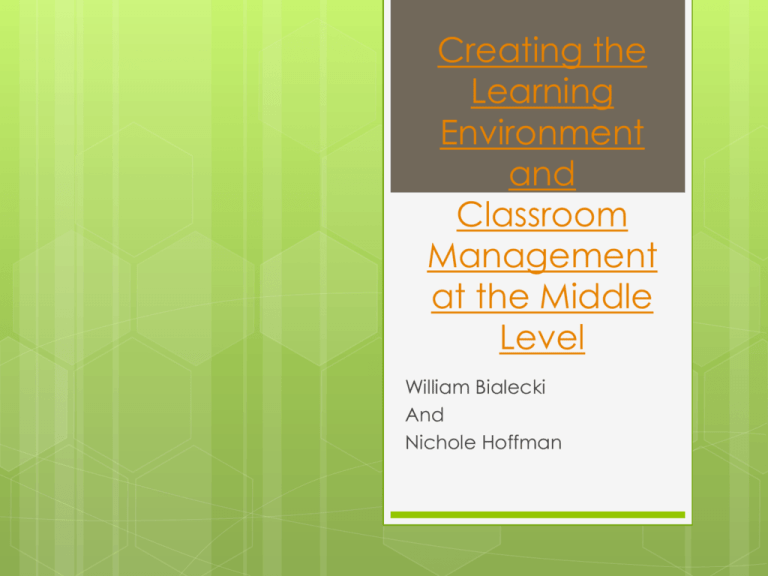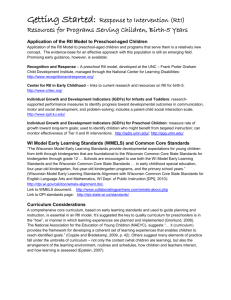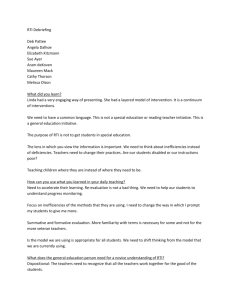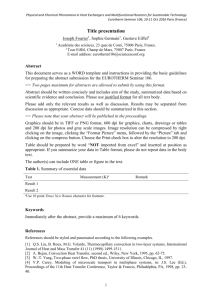Social Contract - UWSPEDUC385-585
advertisement

Creating the Learning Environment and Classroom Management at the Middle Level William Bialecki And Nichole Hoffman Starting Note First Day of Class It is important to get started off on the right foot with your class Start building a quality classroom atmosphere as quickly as possible • Ice breakers are sometimes a good thing Outline your daily routine • Personally and professionally Maybe even something as simple as Parks’ 5-1015-20 rule Set the classroom tone early, which can be outlined by your syllabus Social Contract Agreement of classroom guidelines and rules made between teacher and students Benefits of creating a social contract This type of activity gives each student a voice Teaches students decision making and responsibility Provides a sense of autonomy and value Gives studentsa feeling of power and enstills confidence Helps prevent arguments over rules later on, “we agreed…” Builds a collaborative environment with compromise Guidelines for Creating Contracts Focus on ideal behaviors rather than undesirable actions Keep rules broad to allow application to many situations Keep it simple and easy to remember Majority rules, but remember you are the final authority and have veto power Don’t allow students to determine punishments Steps to Create Contract Brainstorm in small groups Come together as a class and offer ideas to large group Class decides which rules to keep Set clearly worded rules Clarify any questions Create a document and have it ratified Syllabus Your syllabus is a key part of organizing and managing your class Use this to tell students what is expected of both them and you in the class Provide an outline for due dates, readings and exams for students Explain the grade scale and your grading style Include school policies and rules that must be followed. These are the non-negotiable items. Remember it is easier to be stern and strict to begin a school year and ease up later on than the reverse Response to Intervention (RtI) The Wisconsin Model Culturally Responsive Practices “Culturally responsive practices account for and adapt to the broad diversity of race, language and culture in Wisconsin schools and prepare all students for a multicultural world.” -Wisconsin DPI High Quality Instruction “High quality instruction (curriculum, instruction, and assessment) is engaging, standards-based, data-driven, and research-based and is grounded in culturally responsive practices.” -Wisconsin DPI Balance Assessment “Continuous review of student progress within a RtI system involves a balanced, systematic process of constant inquiry that uses multiple measures to determine the current skill level of a student or group of students, how students are responding to core curriculum and instruction, and how students are responding to interventions or additional challenges.” -Wisconsin DPI Collaboration “Collaboration as part of a RtI system includes educators, families, and communities working together both formally and informally. This partnership builds and implements a model that identifies and provides supports to students to increase their academic and behavioral success through data-based decision making.” -Wisconsin DPI Multi-level System of Support “A multi-level system of support is the practice of systematically providing differing levels of intensity of supports based upon student responsiveness to instruction and intervention.” -Wisconsin DPI Take A Break The Wisconsin Model Resources for RtI Wisconsin DPI: http://rti.dpi.wi.gov/ Intervention Central: http://www.interventioncentral.org/ Take A Break What is Classroom Management? What is Classroom Management? History of “Classroom Control” 1800’s: Classroom Discipline 1930’s: Permissive Classes Today: Effective Classroom Management Approach to Classroom Management B.F. Skinner – Behavior Modification Four Steps Token 1) Identify 2) Record 3) Reinforce Desired Behavior 4) Chose a Reinforcer Includes: Privilege, Social, Graphic, Tangible, and Reinforcers Approach to Classroom Management Lee and Marlene Canter- Assertive Discipline -Teacher and Students have rights in the classroom -Expectations should be clearly stated -Positive Consequences for appropriate behavior and negative consequences for inappropriate behavior Approach to Classroom Management Rudolf Dreikurs- Logical Consequences Six Points possitive encourage 1) Involve students 2) Clear understanding 3) Student responsibility 4) Classroom respect 5) Recognize and encourage goals 6) Recognize but do not negative goals Strategies to use in the Classroom Assertive Discipline Discipline Behavior with Dignity Contracting Classroom Set Up Your Dream Classroom Arts and Crafts! What is your dream classroom? Be creative, think out of the box and be prepared to share! Connecting With Parents/Guardians A huge part of managing your classroom begins with students’ home life Get parents involved early and often Don’t be afraid to send things home for signatures, possibly even your syllabus Be willing to call or meet with parents for good and bad reasons Building connections between home and classroom shows you are invested in your students Parents can be your biggest ally or greatest obstacle, so be proactive The Shared Classroom *Activity* Meet Upstairs in 228







